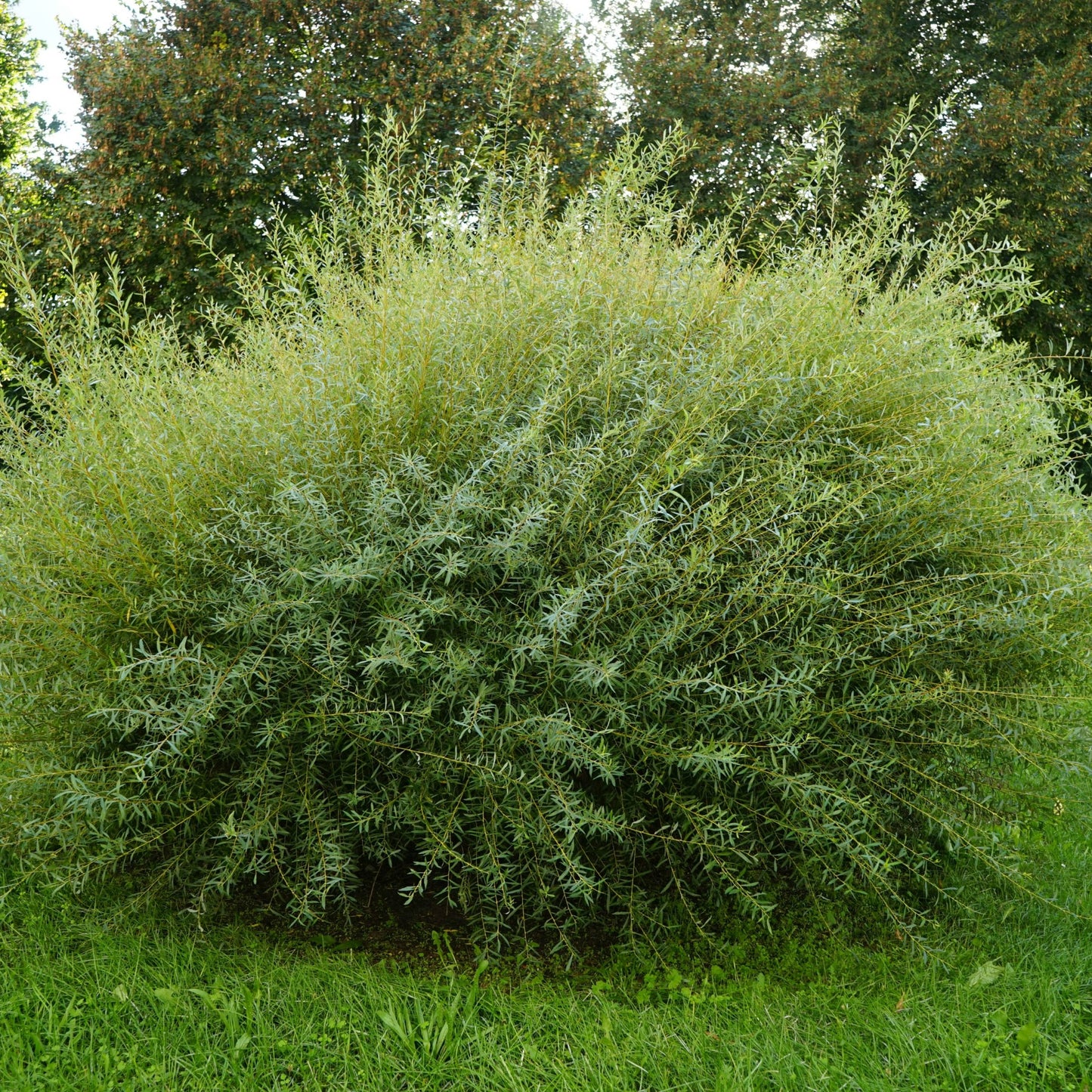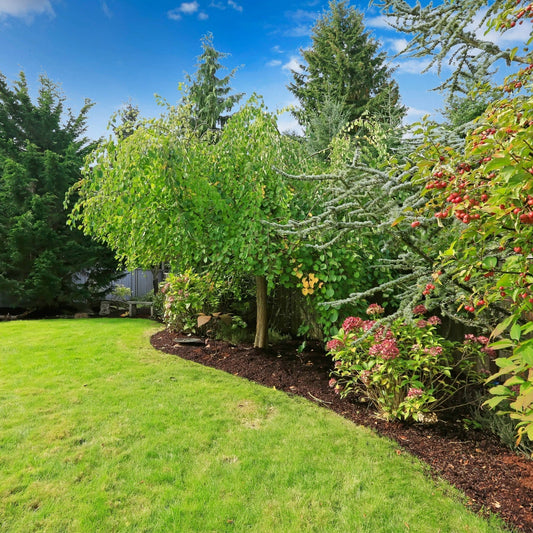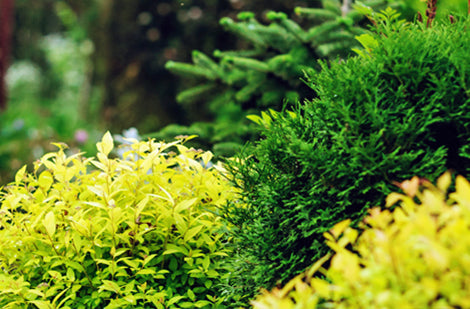Salix purpurea 'Gracilis'
Salix purpurea 'Gracilis' – 'Gracilis' Purple Osier Willow (Dwarf Arctic Willow)
Salix purpurea 'Gracilis' – 'Gracilis' Purple Osier Willow (Dwarf Arctic Willow)
Exposure
- Sun
- Part-sun
- Part-shade
Rusticity
Bloom time
- March
- April
- Very hardy shrubby willow
- Purple stems, winter interest
- Fine, blue-green foliage
- Tolerates pruning very well
- Resistant to deer
'Gracilis' Willow is a prized ornamental shrub, valued for its elegant form and fine foliage. This variety of purple osier willow develops a compact, rounded habit that brings texture to the garden year-round. Its greatest quality, besides its ease of care, is the visual interest it provides even in winter, thanks to the unique colour of its stems.
Characteristics
- Foliage: It displays dense and fine deciduous foliage. The narrow, elongated leaves have a lovely blue-green hue on top and a lighter (glaucous) underside. In the fall, the foliage transforms into a luminous yellow.
- Flowering: In early spring, well before the leaves appear, small, discreet catkins in a purple or reddish colour emerge along the stems, adding an early touch of colour.
- Light: It thrives in full sun but also adapts well to a location in partial shade.
- Habit: It forms a very dense, multi-stemmed shrub that develops a naturally rounded and compact habit. Its base remains full right to the ground.
- Growth: Fast. It is a shrub that can live for 40 years or more. It reaches a height of 1.2 to 1.5 m and a spread of 1.2 to 2.1 m.
- Moisture: It prefers average to moist soil conditions.
- Soil: It is an exceptionally adaptable plant that grows in almost all soil types, regardless of pH. It handles both dry conditions and some standing water.
- Hardiness: Extremely hardy, it faces the harsh winters of Zone 2 without any problem.
- Watering: It requires regular watering while establishing, but proves very versatile afterwards.
- Resistance: It resists deer well and handles urban pollution very well.
Uses
- Types of Use: Its fine texture and dense habit make it an excellent choice for mass plantings or for creating formal or informal hedges. It also integrates perfectly into borders to add texture.
- Ornamental Features: It offers year-round interest. Its delicate summer foliage and fall colour are followed by the spectacle of its young, dark purple stems, which are particularly visible and attractive in the winter garden.
Care
- Fertilizing: It generally does not require any fertilizer to perform well.
- Pruning: It tolerates pruning very well. Prune in late winter or very early spring to remove dead wood and encourage vigorous growth, which also promotes a more intense colour on the new stems.
- Planting: Plant it in well-drained to moist soil, in sun or partial shade. It is an easy plant that establishes quickly.
Plant details
Dimensions
Dimensions
Characteristics
Characteristics
Habit:
- Rounded
Flowering colours:
- Purple
- Red
Plant needs
Plant needs
Watering:
- Tolerates wet soil
- Tolerates dry, well-drained soil
Maintenance:
- Easy
- Prune in spring
Soil requirement:
Features
Features
Resistance:
- White-tailed deer
Attract:
- Butterflies
- Pollinators
Use:
- Mass Planting
- Borders
- Flowerbed
- Isolated
Attribute:
- Decorative Foliage
- Fall Colouration
- Privacy Screen




Related articles
-

Trees and shrubs for small space landscaping
Read the articleHaving an exceptional garden is possible, even in the city! Discover our selection of trees and shrubs perfect for small lots, and transform your outdoor space into a green oasis.
-

When and how to plant shrubs: successful planti...
Read the articleDiscover our complete guide to mastering shrub planting and care. Learn the best planting times, essential techniques, along with tips for watering, fertilizing, and managing common issues. Our practical advice...
-

Choosing shrubs to plant
Read the articleIn exterior design, shrubs represent furniture. They set the scene and set the tone for the flower bed. Shrubs constitute the living architectural elements of the landscaped garden. As proof,...
-

Shrubs: beautiful all year long
Read the articleLe grand choix d’espèces fournit l’occasion de varier les formes, les feuillages, et de créer des floraisons successives, bref, de composer un jardin magnifique à longueur d’année. Pour toutes ces...












